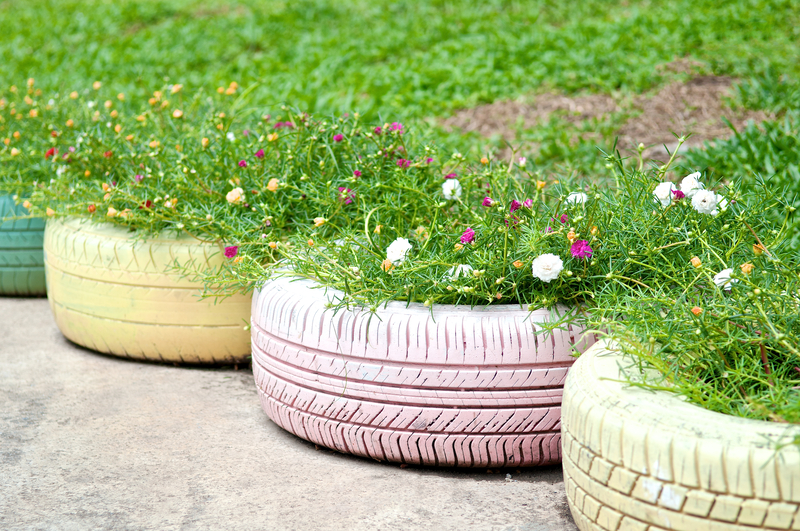From Cluttered to Cleared - Hoarder Cleanup that Makes a Difference
Introduction
Hoarding disorder is more than just an accumulation of items--it's a complex mental health issue that affects individuals and families at every level. For those living in a hoarded environment, the clutter can feel insurmountable, dangerous, and emotionally overwhelming. But with the right approach, hoarder cleanup can truly make a difference. If you or someone you know is seeking ways to move from cluttered to cleared spaces, this comprehensive guide will walk you through understanding hoarding, the impact of clutter, and effective strategies for a successful hoarder clean up.

Understanding Hoarding: More Than Just Mess
Hoarding involves the persistent difficulty in discarding or parting with possessions, regardless of their actual value. This condition is recognized in the DSM-5 as a mental health disorder that can disrupt daily life. The clutter can soon overtake living spaces, leading to unsanitary and even dangerous conditions. Understanding the roots of hoarding behavior is key to facilitating positive change.
- Emotional Attachment: Many items hold sentiment or memories, making it tough to let go.
- Fear of Losing Valuable Information: Individuals worry they'll need the items in the future.
- Sense of Responsibility: Hoarders often feel responsible for caring for things to an extreme degree.
- Social Isolation: Clutter can push people further from friends and family, creating a vicious cycle.
A hoarder house cleanup is not only about removing items but also addressing underlying emotional needs.
The Impact of Hoarding: Why Cleanup Matters
Physical and Environmental Risks
The consequences of excessive clutter go far beyond aesthetics. Hoarding cleanup is often needed because such environments can become hazardous.
- Health Risks: Accumulated dust, mold, and vermin are common in hoarded homes.
- Fire Hazards: Clutter blocks exits and fuels fires, making evacuation difficult.
- Structural Damage: Overloaded floors and hidden leaks can damage the property.
- Reduced Mobility: Pathways may be blocked, increasing the risk of trips and falls.
_Tackling clutter_ swiftly is vital to prevent serious consequences. Hoarder clean up services can make a life-saving difference in these situations.
Emotional and Psychological Impact
Hoarding also takes a heavy emotional toll on individuals and their loved ones:
- Feelings of shame and embarrassment
- Isolation and loss of social connections
- Stress, anxiety, and even depression due to the overwhelming nature of clutter
- Family tension - relationships can fracture under the strain of hoarding behavior
A compassionate hoarder cleanup is designed not just for cleanliness but also restoring dignity and quality of life.
Recognizing When It's Time for Hoarder Cleanup
Many people struggle to know when a hoarded environment has crossed the line from messy to hazardous. If you notice any of the following signs, it may be time to consider a professional hoarder cleanup:
- Blocked exits and hallways that pose fire or personal safety hazards
- Animal infestations or persistent bad odors
- Visible mold, mildew, or water damage
- Utilities (water, heat, electricity) are not functioning or not accessible
- The resident cannot safely navigate or use most living spaces
At this stage, it's usually best not to tackle clean up alone. Hoarding cleanup companies have training and equipment to handle even the toughest scenarios, making the process safer and more effective.
Planning a Successful Hoarder Cleanup
A well-organized cleanup process is crucial for making meaningful, lasting change. Here are the essential steps for an effective cleanup that transitions a home from cluttered to cleared:
1. Build a Support Team
- Involve trusted family and friends for emotional support
- Consult mental health professionals to address the underlying psychological issues
- Partner with reputable hoarding cleanup services to ensure safe and sustainable results
2. Assess the Environment
- Determine the scope of hoarding--from a single room to the entire property
- Identify hazards such as biohazards, pests, and fire risks
- Develop a customized cleanup plan based on the needs of the resident
3. Prioritize Safety
- Equip everyone with gloves, masks, and appropriate clothing
- Ensure proper ventilation and be wary of mold or hazardous materials
- Safely remove and dispose of biohazards or contaminated items
4. Sorting and Decluttering
- Organize items into categories: keep, donate, discard, recycle
- Start small--a single shelf or box--then expand
- Encourage the resident to make decisions at their own pace, with support
- Dispose of hazardous or spoiled items promptly
5. Deep Cleaning
- Clean and disinfect all surfaces after decluttering
- Repair any structural or utility damage
- Address lingering odors with professional-grade equipment
6. Restoring and Organization
- Restore rooms to their intended purposes (e.g., make bedrooms sleepable, kitchens usable)
- Implement organizational solutions--shelves, bins, and labels for easy maintenance
- Personalize the space to support long-term well-being
The Role of Professional Hoarding Cleanup Services
While well-meaning loved ones often want to help, professional hoarder cleanup companies bring a number of unique advantages:
- Trained in hazardous material removal: They know how to deal with biohazards and infestations safely.
- Non-judgmental and confidential: Staff are trained to approach every situation with empathy and discretion.
- Efficient and thorough: Specialized equipment and crews ensure complete and efficient clean-out.
- Follow local regulations: Proper disposal of waste, electronics, and biohazards is handled in compliance with state and local laws.
- Support after cleanup: Many offer guidance for organizing and maintaining cleared spaces.
By partnering with the pros, you get peace of mind knowing your loved one's safety and dignity are prioritized.
Maintaining a Clutter-Free Home After Hoarder Cleanup
The journey doesn't end once the junk is removed. Lasting change depends on ongoing support and sustainable habits.
Aftercare Strategies
- Regular Check-ins: Schedule visits or calls with loved ones to see how they're doing.
- Counseling and Therapy: Continued therapy helps address deeper issues and prevent relapse.
- Organizational Tools: Use labeled bins, shelving, and storage solutions to keep clutter under control.
- Establish Routines: Small, daily or weekly routines to clean and sort prevent big backslides.
- Join Support Groups: Connecting with others going through similar challenges reduces shame and loneliness.
A successful hoarder house cleanup creates a foundation from which residents can rebuild their lives, relationships, and health.
Common Hoarding Cleanup Challenges--and How to Overcome Them
Every hoarder clean up project is unique and presents its own set of hurdles. Here are some common challenges--and solutions:
- Emotional Resistance: Items may hold deep meaning. Show empathy and move at a manageable pace.
- Logistical Complexity: Tight spaces, blocked pathways, and heavy objects require professional-grade equipment.
- Uncovering Hazards: Don't attempt to handle biohazards, mold, or animals without proper training and PPE.
- Family Tensions: Use neutral, outside mediators or professional coordinators when disagreements arise.
- Recurring Hoarding behavior: Pair cleanup with ongoing therapy and community resources.
The key is patience and persistence. Major transformation is possible--but rarely overnight.
Benefits of Hoarder House Cleanup: More Than Just a Clean Space
Physical Health Benefits
- Reduced exposure to dust, mold, and allergens
- Minimized fire and tripping hazards
- Ability to safely use kitchen, bathrooms, and bedrooms
- Improved indoor air quality and comfort
Mental Well-Being
- Decreased stress and anxiety
- Improved mood and sleep quality
- Greater sense of control and accomplishment
- Hope for personal growth and change
Social Benefits
- Opportunities for visitors and social interaction
- Restored relationships with family and friends
- Increased community support and engagement
A deep hoarder cleanup restores not just the house but the person--and their connections to the outside world.

Conclusion
Hoarding disorder can feel isolating and insurmountable, but thorough, compassionate hoarder clean up that makes a difference is possible. The path from cluttered to cleared is a journey--one guided by teamwork, patience, empathy, and, often, the support of professional hoarding cleanup services. Whether reclaiming living space for yourself or a loved one, know that every step forward brings freedom, dignity, and hope for healthier, happier days ahead.
If you're facing the challenge of a hoarded environment, reach out for help--because everyone deserves a safe and comfortable home.
Frequently Asked Questions (FAQ) About Hoarder Cleanup
Is hoarder cleanup expensive?
The cost varies depending on severity, size, and the presence of biohazards. Many hoarder house cleaning services offer free estimates and work with you to develop a plan that fits your budget.
How long does hoarder cleanup take?
It can range from a single day to several weeks. Factors include the amount of clutter, home size, and resident participation. Professional teams accelerate the process without sacrificing quality.
What happens to sentimental or valuable items?
A reputable cleanup company will involve the homeowner in sorting items, ensuring valuables and cherished possessions are preserved. Only unwanted, hazardous, or unusable items are removed.
Can a hoarder cleanup company guarantee the problem won't return?
While clean-up services can restore your home, preventing recurrence depends on ongoing therapy, organizational support, and community resources. Choose services that offer follow-up or aftercare.
How can I support a loved one during hoarder cleanup?
Be patient, non-judgmental, and encouraging. Respect their attachment to items and offer reassurance and practical help. Consider involving a mental health counselor skilled in hoarding behaviors.
If you are ready to start your own journey from cluttered to cleared, remember: support, empathy, and expert guidance can make all the difference.
